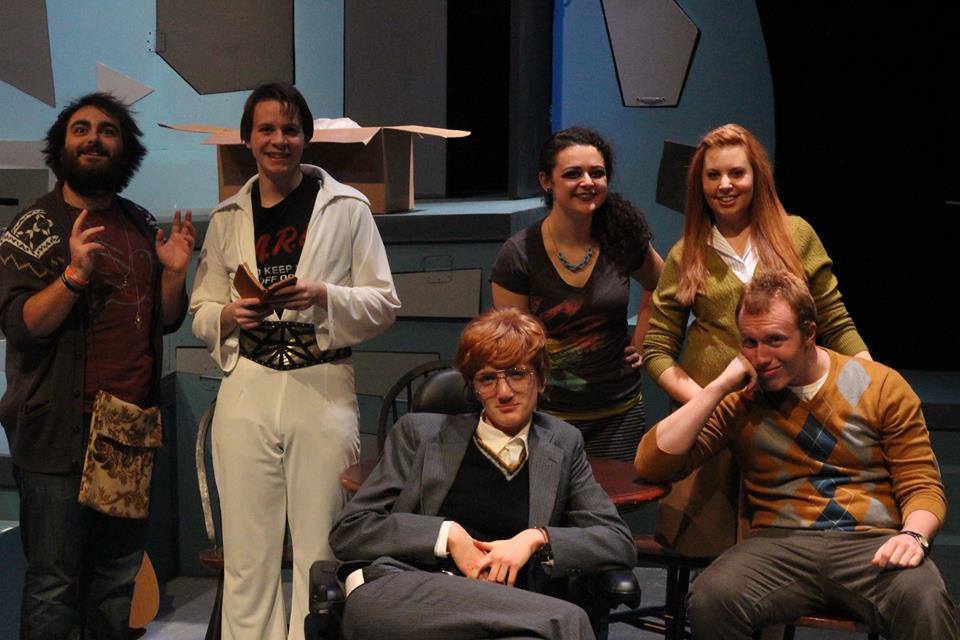Nicholles Klevisha
Connector Staff
The Steins have been fragmented ever since Arthur, a worker in one of the buildings that fell down during 9/11, withdrew from his family into a deep depression. His wife, Sylvia, has become a born-again Christian, and a 16-year-old Elvis impersonator is trying to court their Goth daughter whenever milk cartons are not bombarding him.
The theatre department’s production of “End Days” by Deborah Zoe Laufer had the audience up close and personal with the actors on a black-box style stage in the Comely-Lane Theatre.
The set looked like it came from some unreality, with its circular house and the odd polygonal panes on it that sometimes acted as cabinets or drawers. There were many levels for the actors to explore using ramps, crooked looking stairs or big steps that would be utilized during power struggles in dialogue.
The show explored the duality of some big ideas that often clash, like religion and science, faith and doubt and trying to cope with different anxieties.
While the play questions the characters’ ideals and make points against them, the beliefs are never invalidated or undermined. Hawking’s condescension in the play is tempered by Nelson’s pure wonder of the universe. Sylvia’s unyielding views are misguided, but her vision of Jesus is one of a benevolent leader.
Sylvia, played by Alexa Lambert, is always trying to get her family to repent and this infuriates her daughter Rachel, played by Abby Crossley, to no end.
Rachel’s burst of rage felt like it came from a real place of frustration, and it’s understandable when arguing with the adamant Sylvia, who could shift from sunny to explosive in moments.
Yet despite their differences, they both had the odd tendency of having famous iconic leaders visit them.
Stephen Hawking and Jesus, played by Julie O’Neil and Ryan Perry respectively, embodied the women’s ideals in unorthodox representations. Jesus is Sylvia’s frizzy haired personal savior in flip-flops, and Hawking is Rachel’s chance to disprove religion to her mother.
Although Hawking is chalked up as being a pot-induced hallucination, Jesus’ character is a little more open to interpretation because of his mysterious exit.
Arthur, played by Leighton Moylan, didn’t get a companion of cultural significance, but he did befriend his daughter’s courter, Nelson, who looked a lot like the King of Rock. Their relationship seemed to be formed out of sheer loneliness, but became quite charming once Arthur changed out of his pajamas.
The intimate cast of six allowed the audience to become very familiar with the characters, and their archetypal nature and quirky personalities would make it easy for anyone to pick a favorite one to identify with.
The second half of the play showed the family less estranged from each other, but, while it became less conflict-driven as the family began resolving their problems, the viewers were still invested with the promise of an end to the world.
It was nice to appreciate the small moments that distracted the family members from their usual worries and anxieties, though, such as Arthur teaching Nelson a Hebrew hymn in a tender scene of cultural homage.
The play is thematic, existential and hilariously inquisitive. It makes the audience think and feel, while off-balancing viewers with comedy and tragedy, giving the viewer the option to focus on the good or the bad of a situation.
Its greatest strength is its lack of bias toward any particular set of ideals. While it playfully criticizes, it gives the audience the chance to choose. As Nelson points out during the ending moments of the play, faith and science don’t have to be mutually exclusive.




